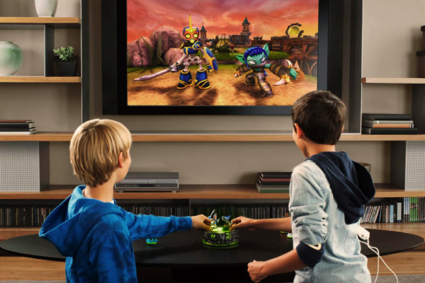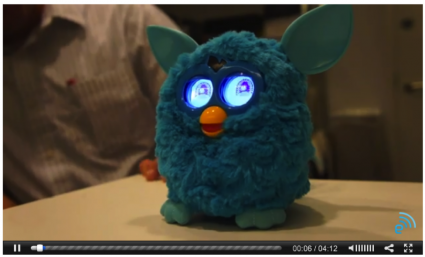Future Now
The IFTF Blog
The Future of Kids' Play: Cross-dimensional Playgrounds
Educational? Yes. Therapeutic? Possibly. But these are side benefits; at heart, play is about fun. And the future of play is about taking all the things kids do for fun—tell stories, act silly, play games, build stuff—and expanding it to include not only the real world and the digital world, but the blending of those two via mobile devices, immersive reality technologies, social networks, and online worlds. Think of the future of play as the rise of cross-dimensional playgrounds.
The structure and purpose of play is not going to change in the next decade. What is changing rapidly is the environment and infrastructure of play: where play happens, whom it happens with, and what materials are employed. In the report, we forecast several key directions for kidstech and play.
Authorship, storytelling, fantasy, and role-playing will expand into new media.
More kids’ content will be produced by kids, and child authors will gain new audiences. For a constant ethnographic window into this new world, try a YouTube search for “kid reviews” and sort by most recent upload. Any day of the week, you’ll find recent examples of kids uploading their video reviews of their favorite books and movies, like this film review of Diary of a Wimpy Kid: Rodrick Rules published on Sept. 19, 2012 by amazingjpd. Growing up immersed in virtual worlds, social networks, and YouTube videos, children will develop a different set of expectations for evaluating human proximity and presence, as well as a comfortable confidence expressing their views across various media.
Play will be a more fluid material experience, blending the virtual and the physical.
Kids will have many fun options to explore depth, sound, gesture, and images. Skylanders, one of the most popular games in North America in 2012, is one of our recent favorites. It invites kids to unleash “frozen” physical statuettes via a hardware “Portal of Power” and software that links the two with all major game consoles. Kids place the RFID-enabled figurines on the Portal and they come alive in the game world on screen. By 2021, kids will expect their digital and physical objects to share more characteristics, including tangibility and connectivity.
Toys show kids how to get emotional with technology.
Smart toys are becoming, in essence, sociable robots, and children are expanding the kinds of relationships they have with them via touch, voice, and gesture. MIT professor Sherry Turkle has been studying children’s shifting attitudes toward computational and robotic toys for the past thirty years. In her latest book, Alone Together, she places us at a “robotic moment” in history. This moment signals our emotional readiness to attach to inanimate objects, which will as time goes on provide more friendship and the “comfort of connection without the demands of human intimacy.” Sociable robots are drawing our children into caring for them, nurturing them, and creating more powerful and affective human-machine partnerships. Our latest favorite signal? Three words: Furby is baaaaaack.
Download the full Magic of KidsTech report here.






